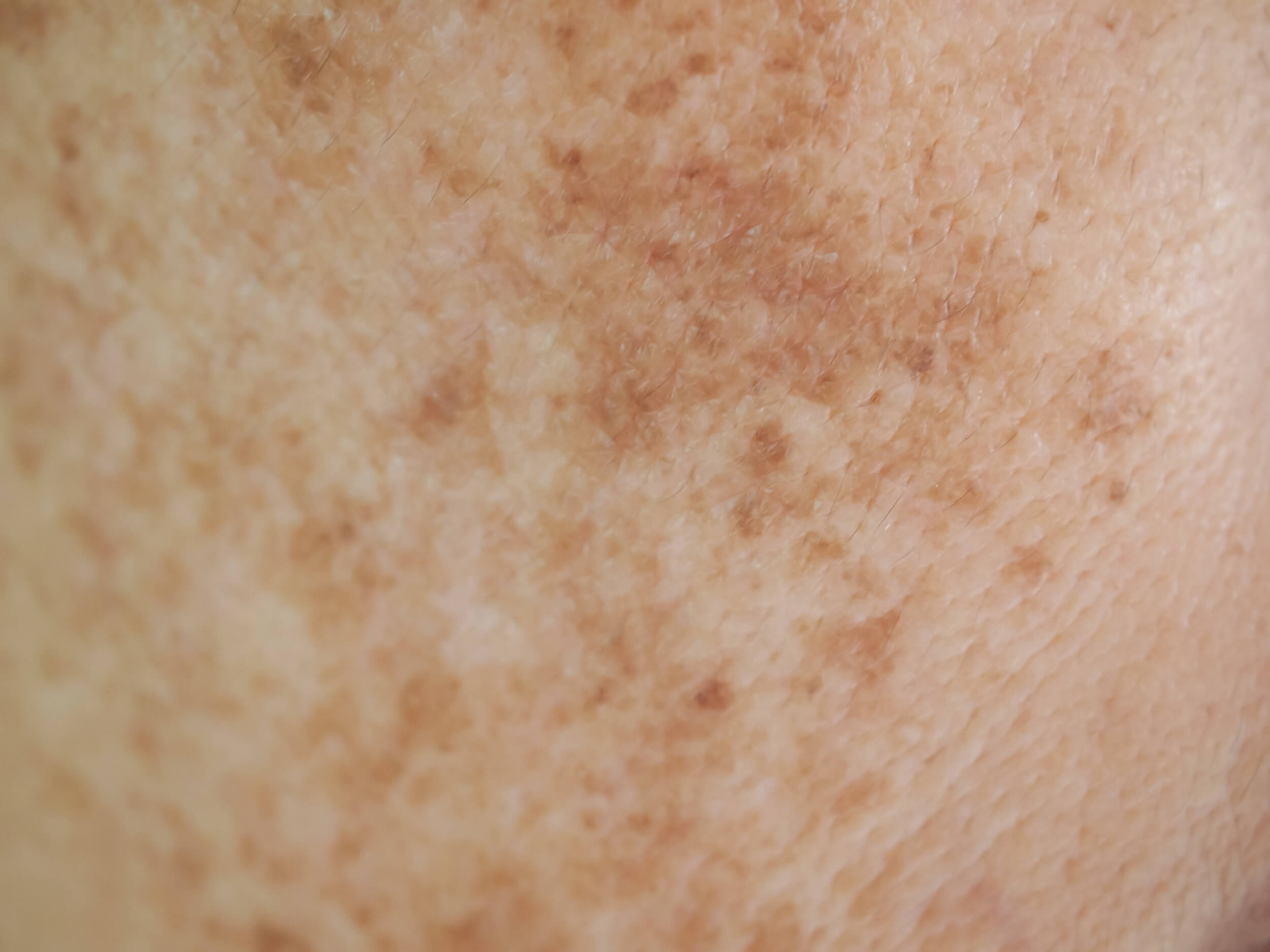Ever wonder why your face gets shiny just a few hours after washing it? Or why your makeup seems to slide off by lunchtime? Oily skin is more common than you might think, and it’s not always because of bad skincare habits.
Could there be something going on beneath the surface? The real cause of oily skin often has more to do with things like hormones, genetics, or even the products you’re using—without knowing they’re making things worse.
So what can you actually do about it? Dermatologists break down what really causes oily skin and how a few simple changes to your daily routine can help manage it without overcomplicating your life.
What Actually Causes Oily Skin?
Oily skin often starts with something called sebum, which is the natural oil your skin makes to keep it soft and protected. Sebum is important for skin health, but when your body produces too much of it, that’s when the problems start.
Some people naturally make more sebum than others. The cause of oily skin can be linked to genetics, meaning it runs in the family and isn’t something you can control. Hormonal changes are another big factor—things like puberty, menstruation, pregnancy, or menopause can all affect how much oil your skin produces.
Medications, including hormone-based treatments or some antidepressants, may also lead to excess oil. Living in hot or humid weather can trigger it too, especially in summer months.
Over-washing your face or using strong skincare products can also make things worse. Stripping away all the oil causes your skin to panic and make even more to make up for it.
These common triggers help explain why oily skin shows up and why it’s not always something you’re doing wrong. Once you know what’s causing the extra oil, it becomes much easier to figure out how to manage it.
How to Know If Your Skin Is Oily (and Not Just Sweaty or Dehydrated)
Not all shine on your face means oily skin. Sometimes it’s just sweat or dryness pretending to be oil. Dermatologists say real oily skin has some clear signs that help tell it apart:
- Persistent shine in the T-zone – your forehead, nose, and chin often stay greasy most of the day
- Enlarged or more visible pores, especially around the nose and cheeks
- Frequent breakouts or clogged pores, even if you’re following a basic skincare routine
- Makeup that won’t stay put – it slides off easily or breaks down quickly
- Greasy feeling after cleansing, like the oil just comes right back
If you notice a few of these, there’s a good chance excess sebum is the cause of oily skin. Knowing what to look for is the first step to treating it the right way.
The Daily Routine That Actually Works for Oily Skin
Getting oily skin under control isn’t about piling on products—it’s about having the right routine and sticking with it. Dermatologists say a few simple habits each day can make a big difference. If you’re trying to deal with the cause of oily skin, this daily plan can help you feel more balanced without overdoing it.
1. Use a Gentle, Non-Stripping Cleanser
Washing your face with a foamy cleanser might feel like it’s doing the job, but lots of bubbles don’t mean better results. In fact, strong cleansers can dry out your skin and make it produce even more oil.
Look for one that says “pH-balanced” and skip anything with sulfates or alcohol. These ingredients are too harsh and can mess with your skin’s natural barrier.
Morning and night are the best times to cleanse—just enough to remove oil and dirt without over-washing. Think of it as a reset, not a scrub-down.
2. Add a Toner That Doesn’t Burn
Toners help clean out leftover oil and tighten the look of pores—but some are way too strong. If it stings, it’s probably not helping.
There are a few kinds to know: exfoliating (removes dead skin), astringent (tightens), and hydrating (adds moisture without oil).
Check the label for ingredients like niacinamide or salicylic acid. Witch hazel can also help, but it might be drying for some people, so go slow.
Before using a new toner all over your face, test it on a small spot to see how your skin reacts. One good patch test can save you a lot of trouble.
3. Moisturizer Is Not Your Enemy
Skipping moisturizer is a common mistake for people with oily skin. It seems like it would help, but it often makes things worse.
When your skin doesn’t get enough moisture, it fights back by making more oil. That’s the opposite of what you want.
Look for lightweight, water-based moisturizers with ingredients like hyaluronic acid or glycerin. They hydrate without the greasy feel.
You’ll also want to pick something labeled “non-comedogenic,” which means it won’t clog your pores. Think of moisturizer as a shield—it keeps good stuff in and bad stuff out.
4. Never Skip Sunscreen
Sun protection matters for every skin type. Skipping it doesn’t just lead to sun damage—it can also mess with your skin’s oil levels.
Too much sun can dry you out and cause a rebound effect, where your skin tries to fix the damage by making more oil.
Choose a sunscreen made for oily skin. Mineral-based, gel textures, or mattifying options are all good picks.
Make sure it’s labeled “non-comedogenic” and oil-free. That way, it won’t clog your pores or make you shinier than you already are.
5. Use Blotting Papers (the Right Way)
Blotting papers don’t treat the cause of oily skin, but they’re great for quick fixes. They soak up surface oil without messing up your makeup.
The key is to pat—don’t rub. Rubbing spreads the oil and can irritate your skin.
Use them when you start to feel shiny during the day, but don’t rely on them too often. They’re for touch-ups, not long-term control.
6. Exfoliate—but Not Every Day
Exfoliating helps clear away dead skin and keeps your pores from getting clogged. But doing it too often can backfire.
Too much exfoliation strips your skin and causes it to make even more oil. Most dermatologists suggest 2–3 times a week, depending on your skin.
Look for exfoliants with salicylic acid—a BHA that goes deep into the pores. It’s especially helpful if your oily skin also breaks out.
Gentle is the goal. No need for rough scrubs or heavy peeling products.
7. Spot Treatments for Breakouts
Oily skin often comes with breakouts, and having a spot treatment on hand can really help.
Tea tree oil, benzoyl peroxide, or sulfur-based creams are some of the top options dermatologists recommend.
Apply them only to the spot—not all over your face—and always before your moisturizer.
Be careful not to dry out the skin around the pimple, or it can get irritated fast. A little goes a long way when it comes to treating problem areas.
Building this kind of simple, daily routine helps tackle the cause of oily skin from multiple angles. You’re not trying to get rid of oil completely—you’re just trying to keep things balanced. Stick with these habits, and you’ll give your skin the best chance to stay clear and shine-free.
Dermatologist-Approved Treatments for Long-Term Oil Control
Sometimes, even with a solid routine, oily skin keeps coming back strong. That’s when dermatologists suggest a few extra tools to help manage it long term—especially if the cause of oily skin goes deeper than daily habits.
Topical treatments are often the first step:
- Retinoids (like adapalene or tretinoin) help skin renew itself and reduce oil over time
- Niacinamide creams can shrink the look of pores and calm redness
- Clay masks, used 1–2 times a week, help absorb oil without drying out your skin
If store-bought products aren’t helping, prescription options might be needed:
- Spironolactone or isotretinoin are sometimes used for severe oiliness or breakouts
- Hormonal birth control may help if oil is linked to hormone changes
Professional treatments can also make a difference:
- Chemical peels help remove buildup and target oily areas
- Laser treatments can shrink oil glands over time
If oily skin doesn’t improve or keeps causing breakouts, it’s worth talking to a dermatologist for a personalized plan.
What You Can Do to Prevent Oily Skin From Getting Worse
Some everyday habits might be making your oily skin harder to manage—even if you don’t realize it. Over-washing your face, using hot water, or reaching for harsh scrubs and strong toners can all push your skin to make more oil. Sleeping with makeup on and switching products too often can also throw your skin off balance.
To help stop the cycle, keep your routine steady. Changing things too much or too fast can confuse your skin. Make it a habit to wash pillowcases often and clean your phone screen—they collect oil and dirt fast. If you wear makeup, go for oil-free or water-based options that won’t clog pores or add to the shine.
Does Diet Actually Affect Oily Skin? What the Research Says
Some studies have looked into whether food choices play a role in oily skin. So far, small research groups have found a link between high-sugar foods, dairy, and more oil production. While changing your diet isn’t a guaranteed fix, some people do notice a difference.
If you’re curious, the best way to check is to track your meals and your skin for a few weeks. A simple food and skin journal can help you spot patterns. It’s not about cutting everything out—it’s about finding what might be triggering your oil from the inside out.
Final Thoughts on Managing Oily Skin the Right Way
Oily skin isn’t a flaw—it’s just a skin type that needs the right care. You don’t need to get rid of all the oil on your face, just learn how to manage it in a way that keeps your skin feeling balanced and clear.
Building a simple, consistent routine can go a long way. Gentle products, regular habits, and smart choices all help. If something isn’t working, it’s okay to ask a dermatologist for advice.
They can look at what’s really going on beneath the surface and help you figure out the actual cause of oily skin. The good news? You don’t have to deal with it alone, and small changes really can make a big difference.












